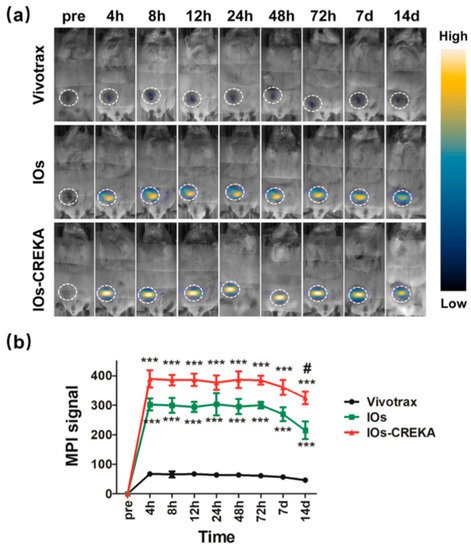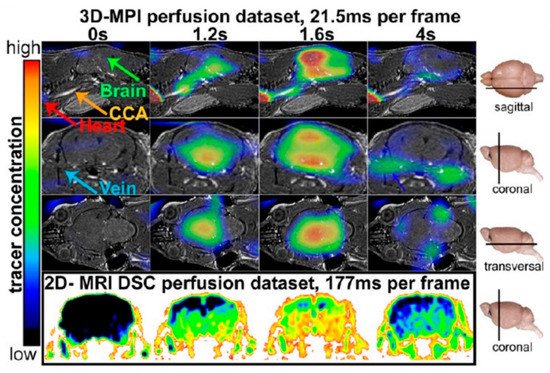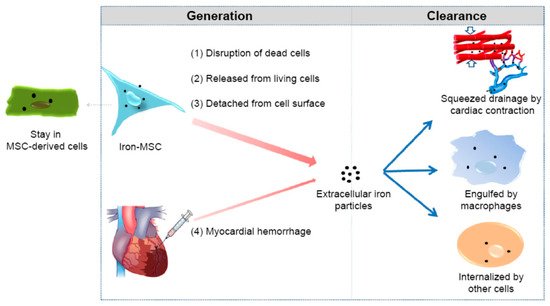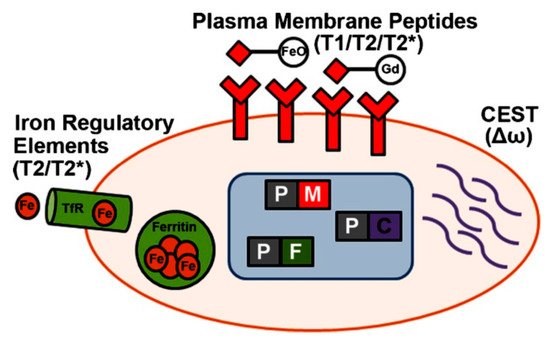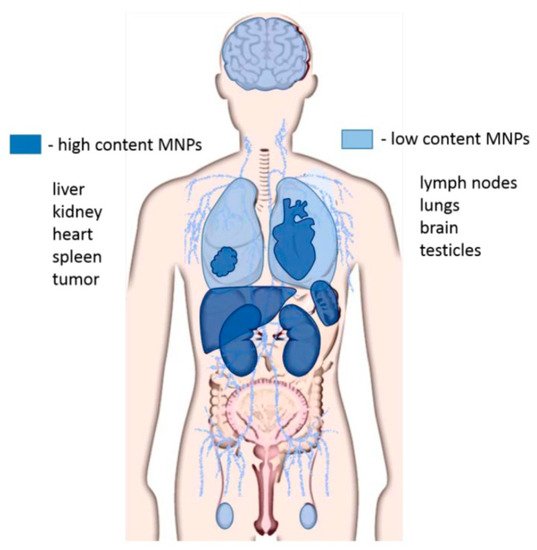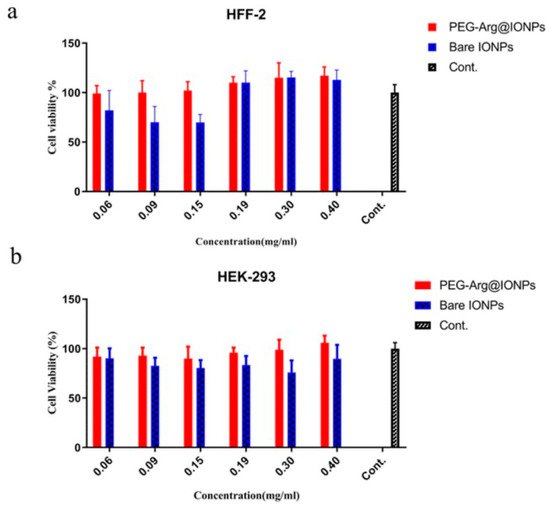Magnetic nanoparticles (MNPs) have a wide range of applications; an area of particular interest is magnetic particle imaging (MPI). MPI is an imaging modality that utilizes superparamagnetic iron oxide particles (SPIONs) as tracer particles to produce highly sensitive and specific images in a broad range of applications, including cardiovascular, neuroimaging, tumor imaging, magnetic hyperthermia and cellular tracking.
1. Introduction
MPI is a tracer-based, functional and tomographic imaging modality, which determines the spatial distribution of MNPs [1]. MNPs are a widely diverse group of materials that have relevant and potentially ground-breaking applications in a wide variety of biomedical arenas including drug delivery, cell targeting, magnetic hyperthermia, and diagnostic imaging [2].
Magnetic particle imaging is an innovative imaging modality that is being developed to add strength and diversity to current imaging techniques such as MRI, CT, bioluminescence imaging (BLI), positron emission tomography (PET), and single photon emission computed tomography (SPECT) [3][4]. While each of these imaging techniques possess clinical utility, they are also accompanied by shortcomings. For example, MRI is a commonly utilized and powerful diagnostic tool in many clinical arenas, including cancer and cardiovascular imaging [5]. Recently, the value has come into question, as limitations to MRI are recognized. Limitations include long scan times, lack of standards for quantitative measures for clinical usage, and inefficient recognition of false positive results prior to initiating treatment [6]. Additionally, the various imaging techniques present a level of risk to patients, including radiation exposure during nuclear imaging procedures such as PET and CT scans [7], and gadolinium exposure during MRI, which can lead to systemic accumulation or nephrogenic systemic fibrosis in certain patients [8]. With these limitations in mind, the desire for a safe, efficient, ultra-sensitive and specific, multipurpose imaging system that will produce quantifiable 3D images is obvious—and leads us to MPI.
Considering the described and perceived strengths of MNPs and MPI, the question arises regarding the lack of clinical use of this system. While there are many advantages to MPI and it undoubtedly has the potential to improve biomedical imaging, there are also many obstacles and challenges. These challenges include ideal MNP development, safety concerns and practical implementation [9][1][10][11][12].
2. Magnetic Nanoparticle Synthesis Methods
As the utility of MNPs across various applications becomes more widely accepted, new methods for MNP synthesis are being developed. Specifically, as SPIONs hold such strong promise in the field of MPI, there are many synthesis methods reported. The most common methods include co-precipitation, thermal decomposition, hydrothermal synthesis, microemulsion, electrochemical synthesis and bacterial synthesis [13][14][15][16].
Presently, producing a colloidally stable batch of iron oxide nanoparticles is dependent on particle size, surface chemistry, density, and aqueous conditions [17][18]. Creating monodispersed iron oxide nanoparticles provides consistency, reproducible results, and predictable responses. This is critical, as limited reproducibility is a challenge in large-scale production and scalable production will be an important step to MPI becoming available for clinical use [19]. Research has demonstrated that thermal decomposition techniques using nonpolar solvents produce highly monodispersed MNPs with specific surface coatings [17].
3. MPI Applications
3.1. Cancer Imaging
MPI research is pushing the boundaries of conventional oncology imaging, especially sensitivity and resolution, by utilizing the intrinsic characteristics of MNPs and SPIONS. Song et al. [20] explored this approach by creating Janus iron oxide particles coated with a semiconducting polymer. Those MNPs demonstrated 7-fold the intensity of commercial MRI tracers and 3-fold the intensity of commercial MPI tracers. The Janus MNPs properly imaged as few as 250 cancer cells in vivo. Compared to the clinical imaging capability of 109 cancer cells, 250 cells indicate a substantial significant difference in resolution and sensitivity.
Yu et al. [21] explored the possibility of in vivo cancer MPI imaging in a xenograft breast tumor rat model utilizing long circulating SPIO tracer (LS-008). Their work relied on the enhanced permeability and retention (EPR) effect that is understood to allow nanoparticles to preferentially accumulate in tumors due to the leaky vasculature of the tumor [21][22]. They were able to demonstrate preferential accumulation of the particles within the tumors, with particles present within the tumor up to six days post injection, and a dose dependent increase in concentration of the tracer in blood. These findings provide confidence in the EPR effect and the quantitative abilities of MPI in vivo. This work led Yu et al. [21] to pose the question of MPI’s efficacy in less vascular tumors as well as metastatic tumors, given the heterogeneity of neoplasia, prior to suggesting clinical use of MPI for cancer imaging.
Du et al.
[23] used a tumor targeting agent called CREKA to functionalize PEG-coated iron oxide nanoparticles. CREKA is a penta-peptide known to bind to fibrin-fibronectin complexes expressed by cancer cells. MNPs were functionalized with CREKA to selectively accumulate within cancer cells after systemic administration of MNPs. Results, which are visualized in
Figure 1, demonstrated an MPI signal 1.5-fold more intense than non-functionalized iron oxide nanoparticles and 5-fold more intense than Vivotrax which is commercially available.
Figure 1. MRI
/MPI image of nanoparticle distribution from a mouse model (
a) which shows improvement of MPI signal intensity using CREKA peptide functionalization of iron oxide nanoparticles (
b). ***
p < 0.001, IOs-CREKA NPs or IOs compared with Vivotrax group;
# p < 0.05, IOs versus IO-CREKA NPs.Reprinted with permission from Du et al.
[23].
3.2. Cardiovascular Imaging
MPI offers benefits that are increasingly attractive for use in cardiovascular imaging [24]. Magnetic nanoparticles can act as nano-probes and deliver significant information including anatomic and physiologic details of cardiovascular diseases [25]. This behavior is largely a result of the size and physical characteristics of MNPs, as they are well suited for cellular imaging of myocardial and atherosclerotic anatomy and abnormalities [26]. A main application of MPI for cardiovascular imaging is direct administration of MNPs into blood vessels to visualize blood flow. This is feasible due to the ability of MPI to image any depth of tissue [27] and is quite impactful, as visualizing blood flow can identify abnormalities in velocity or pattern of blood flow [28], which can indicate structural changes. Vaalma et al. [29] described the ability of MPI to investigate degree of stenosis within vasculature. It was found that at an appropriate clinical MNP concentration, an area of stenosis as small as 2 mm could be successfully imaged. MPI can also be used during cardiovascular interventions, such as catheter guidance in minimally invasive procedures [4].
3.3. Neuroimaging
MPI enables and improves many neuroimaging applications and is often considered safe. MPI not only provides superlative sensitivity and accuracy to other imaging modalities, but can also be used anywhere in the body and utilizes long-circulating SPIONs
[30] which leads to great promise for neuroimaging. By providing 3D information, MPI is a superior technique over common 2D methods such as X-ray or MR angiography. Traditional X-ray and MR imaging methods are often unreliable in evaluating size and location of brain tumors, and are unable to differentiate the pathophysiology of changes in tumor size
[31]. MPI has the potential to image smaller or elusive tumors more specifically, and hopefully improve clinical outcomes through safe and specific diagnosis and monitoring of brain cancer
[32].
MPI methods are assumed to have shorter acquisition times as well as higher temporal resolution when compared to MRI or CT. Recognition of the anterior and posterior cerebral circulation via the basilar artery has been performed via MPI methods on the mouse brain, where the real-time observation of the flowing blood has been enabled. Additionally, MPI has been used by Ludewig et al.
[33] to assess cerebral perfusion in mice.
Figure 2 displays signal information obtained from the injected tracers of SPIO at various time points, highlighting a useful technique in diagnosis and therapy of patients affected by stroke.
Figure 2. Tracers of SPIO bolus passing through the stroked brain of a mouse. Slices of fused 3D MPI data at several times are shown for the coronal, sagittal, and transverse planes. (Red arrows: occluded and non-occluded common/internal carotid. Blue arrow: the basilar artery). MR dynamic susceptibility contrast (DSC) images are shown for comparison (bottom row). Reprinted with permission from Ludewig et al.
[33].
3.4. Cell Tracking
Current areas of interest of MPI for cell tracking include evaluation of cell delivery and fate, particularly for cardiovascular and neural applications
[34][35].
Prospective applications for MPI include monitoring and therapy of cardiovascular and neural diseases utilizing stem cell therapy,
[36][37][38] as well as development of safe, effective stem cell therapies
[39]. Benefits of MPI for cell tracking in these areas include high sensitivity and specificity
[40], especially the promise of specific quantification of transplanted cells
[40][41], long-term longitudinal monitoring of applied cells
[42] and perceived risk reduction, as SPIONs utilized are described as biocompatible and biodegradable
[40]. SPIONs are among the most employed tracers for labeling stem cells due to their exceptional magnetic properties and outstanding biocompatibility
[43][44].
MPI has potential to be used with MRI to mark and track stem cells for treatment of cardiovascular diseases, as stem cell therapy is a promising therapeutic option for cardiovascular diseases, including myocardial infarctions
[36][37][38][45].
Figure 3 shows a schematic of generation and clearance of the extracellular SPIONs in the myocardium.
Figure 3. Generation and clearance of the extracellular SPIONs in the myocardium. Reprinted from Huang et al.
[46] following the Creative Commons Attribution (CC BY) license (
http://creativecommons.org/licenses/by/4.0/) (accessed on 4 March 2021).
Leakage of SPIONs into the adjacent cells is also an obstacle in using these nanoparticles for stem cell tracking and monitoring. Leakage occurs mainly due to exocytosis after cell division
[47]. Vandsburger
[48] suggested labeling cells with MR reporter genes as a solution to cope with cell tracking modalities. The process is shown schematically in
Figure 4.
Figure 4. Schematic representation of MRI gene reporter integration for in vivo detection of cell fate decisions. CEST (chemical exchange of saturated magnetization), TfR (transferrin receptor). Reprinted from Vandsburger
[48] following the Creative Commons Attribution (CC BY) license (
http://creativecommons.org/licenses/by/4.0/) (accessed on 6 March 2021).
3.5. Magnetic Hyperthermia
Magnetic hyperthermia (MH), which is also referred to as nanoparticle based magnetically induced hyperthermia (NP-MIH)
[49] and magnetic fluid hyperthermia (MFH)
[50], is a technique that utilizes MNPs to couple magnetic energy into the body to ablate diseased tissue
[50][51].
Magnetically induced hyperthermia was shown by Gupta and Sharma
[52] to enhance activity of chemotherapeutic agents by increasing permeability of the BBB, which increased drug concentrations within tumors. This increased synergy of magnetic hyperthermia with conventional cancer therapies is well confirmed
[27]. Magnetic hyperthermia also offers safety compared to techniques such as whole-body hyperthermia
[49]. MH can kill cancer cells without an excessive temperature rise
[27]. This is partially a result of the disruption of enzymatic activities within cancer cells, which allows for heat-controlled necrosis
[49]. as well as the fact that tumor cells are typically more thermosensitive than healthy, non-neoplastic cells
[49]. Despite these strengths, magnetic hyperthermia is accompanied by challenges, including SPION accumulation in off-target organs such as the liver and spleen, which Kut et al. [Kut 2012] demonstrated can result in inadvertent damage to those tissues during heating. An additional limitation lies in focusing of the excitation wave, especially with tissue depth, and difficulty in quantitative imaging of SPION mass for planning of hyperthermia treatment protocols
[27].
An intriguing prospective application of magnetic nanoparticles within magnetic hyperthermia is hyperthermia treatment utilizing magnetic biomaterials
[53]. MNPs are recognized as promising and suitable heating agents for the design of hybrid materials and implants
[54]. Magnetic biomaterials to facilitate hyperthermia therapy have been investigated for local treatment to prevent reoccurrence of resected bone tumors such as osteosarcoma
[53][54][55] and for treatment of non-resectable intraluminal tumors such as tracheobronchial carcinoma
[54]. Major challenges in this area include the manufacturing of predictable and effective magnetic biomaterials and need for strategies to plan and monitor temperature during treatment
[53][55].
4. Safety and Toxicity
4.1. Background
While MPI offers many benefits, there are serious safety concerns. Concerns stem from the magnetic nanoparticles utilized within MPI, as well as the equipment involved. Iron oxide nanoparticles are the most common MNPs studied for this application, and implementation in vivo demands biocompatibility. There is a basic understanding of MNP toxicity. However, further work is required to define specific safety and toxicity parameters. In particular, degradation profiles of available MNPs should be determined, and amounts of potentially toxic substances released from these particles, quantified.
4.2. Toxicity Mechanisms
Accumulation and distribution of MNPs are a main cause for in vivo toxicity. It is well understood that the biodistribution of MNPs depends on the particle size, particle coating, and mass of particles administered [15][56][57][58][59].
Biodistribution of MNPs has been tracked via opsonization, a process where antibodies mark foreign pathogens (in this case MNPs) for elimination by phagocytes [60]. It was determined that opsonized MNPs were removed from the bloodstream within a few minutes and were distributed as follows: 80–90% through the liver, 5–8% through the spleen, and 1–2% via the bone marrow [59]. Additionally, interaction and toxicity of MNPs is highly dependent upon the particle surface. Therefore, investigation into ideal coatings for functional, excretable MNPs is necessary.
The distribution of MNPs throughout the body is represented in
Figure 5. It is important to note that with uncoated MNPs, a decrease in the size of the particles typically leads to an increase in concentration, resulting in a longer blood circulation time
[56].
Figure 5. Representation of biodistribution of MNPs in organs and tissues. Unedited image obtained from Zamay et al.
[56] following the Creative Commons Attribution (CC BY) license (
http://creativecommons.org/licenses/by/4.0/). (accessed on 20 April 2021).
The most important safety mechanism to be investigated is interference of normal, physiologic iron metabolism after in vivo MNP degradation, as superfluous accumulation of intracellular iron may damage cellular components including nucleic acids and proteins
[15]. Therefore, when investigating MNP toxicity profiles, ability to track the accumulation and degradation of these particles through time is crucial. Variation in factors such as the shape, size, structure, and surface of the MNPs will allow elucidation of the most suitable MNP design for specified applications.
4.3. Methods for Limiting Toxicity
Desirable properties of MNPs to promote a healthy safety profile mainly include biocompatibility and an appropriate surface chemistry [61]. Of these characteristics, a major technique to effectively reduce toxic effects of these MNPs is surface modification. Surface modifications can: decrease aggregation of MNPs, prevent changes in magnetic properties to maintain efficacy of the MNPs, and inhibit adhesion with plasma proteins to prevent major inflammatory responses in vivo.
A study conducted by Nosrati et al.
[62] modified the surface of MNPs by capping iron oxide magnetic nanoparticles with arginine, an amino acid, and then conjugating PEG on the surface. Cytotoxicity and hemocompatibility tests were conducted with an in vivo mouse model and an in vitro hemolysis assay, respectively. Specifically, cell viability was tracked through colorimetric assays at different sample concentrations between a fibroblast and kidney cell line (shown in
Figure 6). The modified NPs were compared to a group of iron oxide nanoparticles with a bare, unmodified surface.
Figure 6. Cytotoxicity analysis of human fibroblast (HFF-2,
a) and human embryonic kidney (HEK-293,
b) cell lines with varying concentrations of SPIONs. Unedited image obtained from Nosrati et al.
[62] following the Creative Commons License, (
http://creativecommons.org/licenses/by/4.0/). (accessed on 20 April 2021).
Results indicated no noticeable effects of the PEG-Arg@IONPs against cell line growth, and less than 2.8% hemolytic activity, demonstrating desirable blood biocompatibility. Lastly, in vivo clearance and biodegradation of MNPs were monitored by MRI techniques and showed long blood circulation time and safe degradation of MNPs
[62].
To advance the use of MPI, it is crucial to analyze the average blood circulation time and biodistribution of MNP clearance. With this in mind, it is vital to conduct and document experiments that were successful in minimizing toxicity.
5. Conclusions and Perspectives
Overall, MPI offers great promise for a wide range of applications, including but not limited to cancer, cardiovascular, pulmonary and neuroimaging, cellular tracking, and therapeutics such as magnetic hyperthermia. Currently, MPI remains a pre-clinical imaging modality and requires significant upscaling and safety profile development prior to being utilized clinically. However, over time and with extensive research and development, the field of magnetic particle imaging will no doubt revolutionize the accuracy, precision, and methodology in which innumerable diseases are diagnosed and monitored, and the therapy that is administered.

